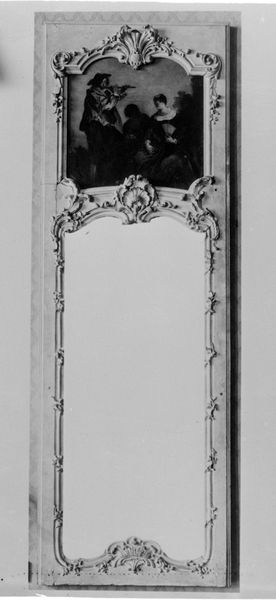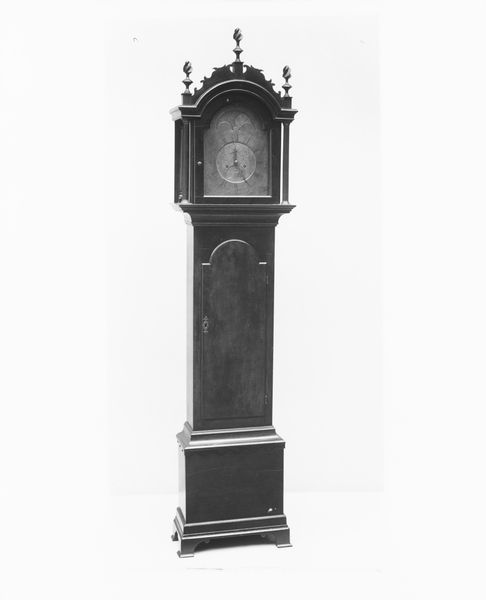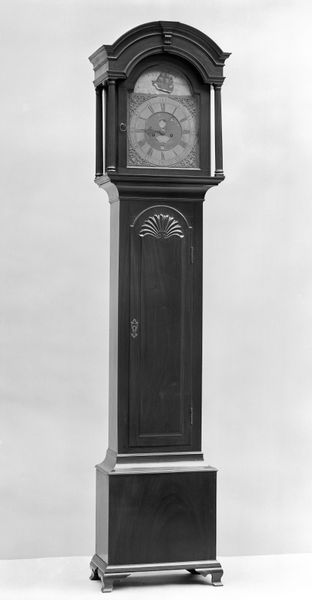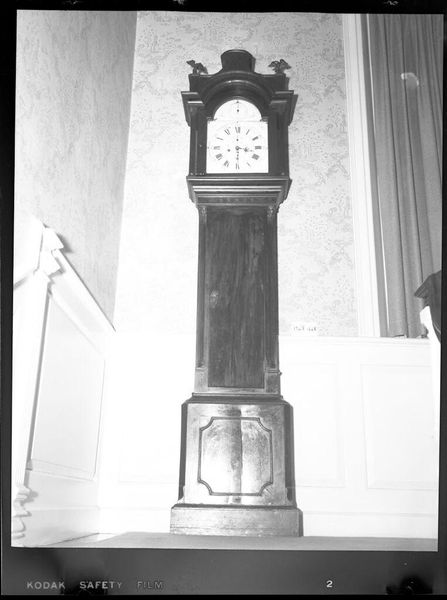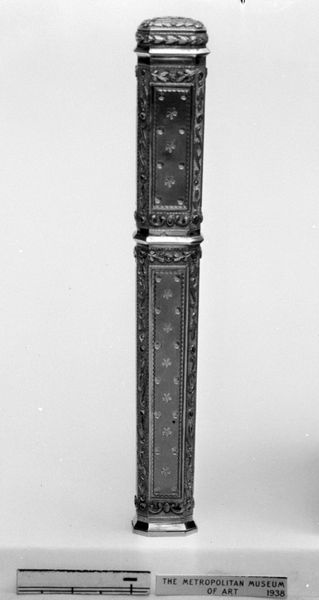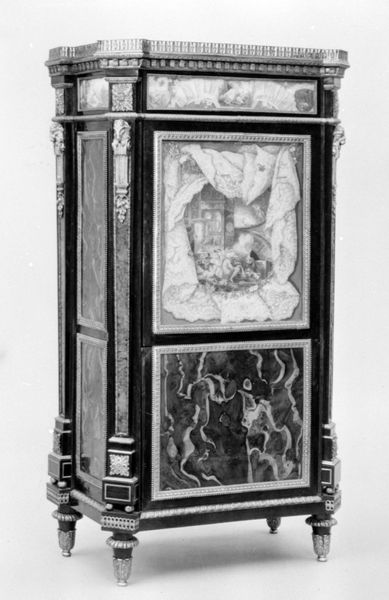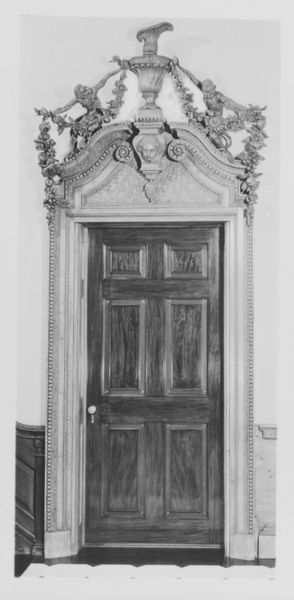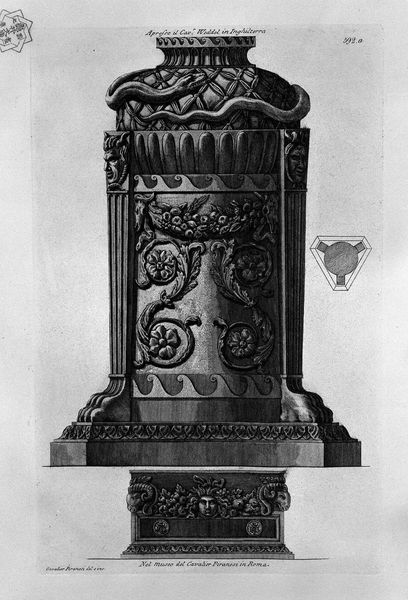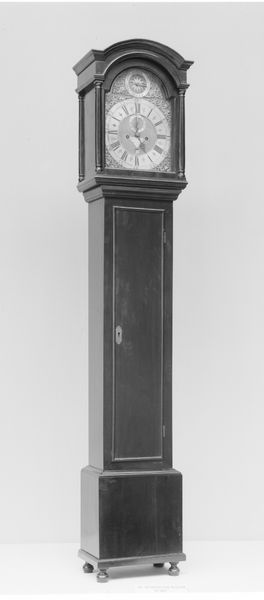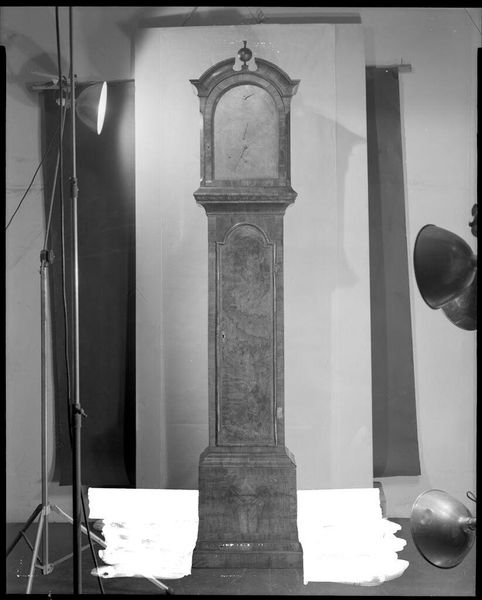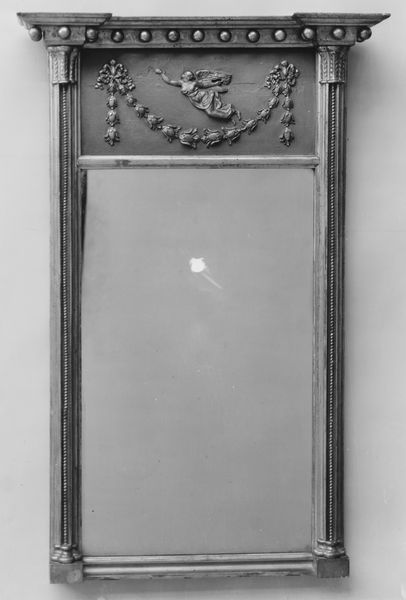
sculpture, wood, architecture
#
sculpture
#
sculptural image
#
historic architecture
#
sculpture
#
black and white
#
wood
#
monochrome
#
decorative-art
#
architecture
#
monochrome
Dimensions: Overall: 8 ft. 8 in. × 21 in. × 10 3/4 in. (264.2 × 53.3 × 27.3 cm)
Copyright: Public Domain
Curator: Immediately, it strikes me as austere, even imposing, but undeniably grand. The monochrome palette accentuates its sheer size. Editor: This is a photograph of a longcase clock created by Nathaniel Brown around 1775, currently housed in the Metropolitan Museum of Art. A majestic example of 18th-century craftsmanship in wood. Curator: The use of wood feels significant. Given the era, it's hard not to think about labor, about the resources extracted to create something so explicitly designed for wealthy households. Editor: Precisely! And look closer at the ornamentation. The delicate carvings around the clock face evoke classical architectural motifs. Columns, cornices... time, literally enshrined in established power structures. Note, too, that clocks, in this period, were often symbols of masculine domestic control. Curator: Absolutely, that resonates powerfully. Timekeeping became a symbol of rational control, but who had the leisure, and therefore the power, to care about time in such detail? This clock silently signifies privilege. Its symbols tie domesticity to something larger than simple household order. Editor: Yes, these clocks often featured symbolic imagery— sometimes allegorical figures representing virtues, or maritime scenes reflecting trade. While this image offers just a monochrome perspective on those design decisions, you can imagine the ways that certain families made statements about status, piety and social consciousness within their choices for their time-telling. This isn't simply about decoration; it's a deliberate encoding. Curator: So, while it might simply seem like a decorative piece, the longcase clock becomes a silent herald of hierarchy. Editor: Exactly. Curator: Looking again, I can’t help but see how deeply intertwined notions of time, power, and social structures really are, even within the "domestic sphere" of its original location. Editor: Indeed. These objects contain cultural DNA of earlier eras, if you look deeply into their components.
Comments
No comments
Be the first to comment and join the conversation on the ultimate creative platform.
